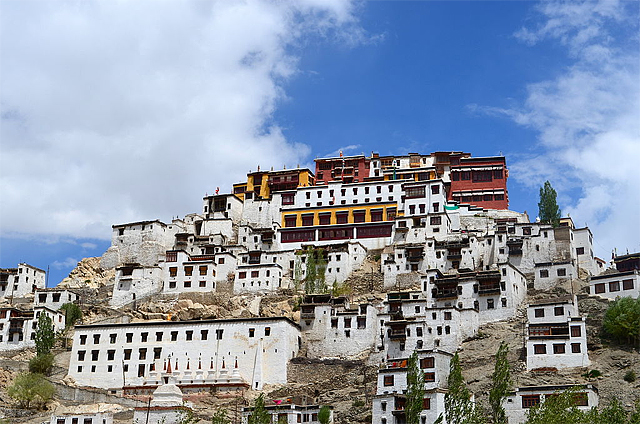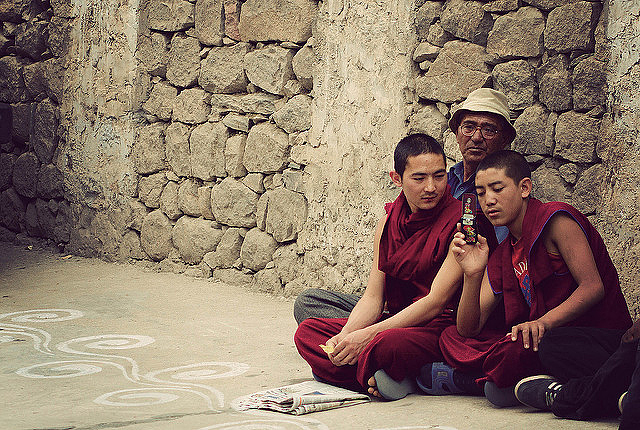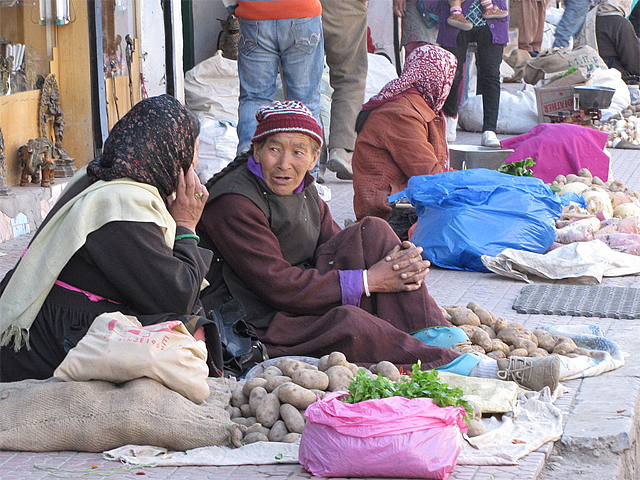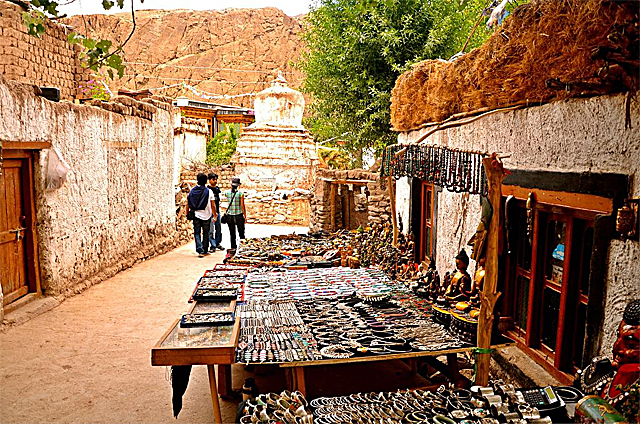The Dalai Lama recently said in a speech, “Here in Ladakh, I am happy to see that Buddhists and Muslims have good relations and live together in peace.” He added, “This is something very precious about Ladakh that you must preserve. It’s a treasure that others in India and the world at large may admire.” A most interesting 2,700 word travel essay on Ladakh by Tom Downey, published by the Wall Street Journal in WSJ.magazine on January 25, reported those words by the Buddhist leader.

Mr. Downey began his Ladakhi journey in the village of Thiksey, where a major monastery stands on top a prominent hill not far from Leh. It looks very much like the Potala Palace in Tibet. When the author arrived, the monastery was preparing to welcome a visit from the Dalai Lama.
Downey was struck by the youth of the monks at Thiksey, some of whom are as young as six or seven years of age. On his first morning in Ladakh, he climbed up to the monastery rooftop to join two teenage monks who picked up brass horns and blew them out over the valley. Monks came out of their cells below and filed into a prayer room where they sat and chanted for an hour. Then, the youngest monks began to pour cups of yak-butter tea for everyone, and the older monks started eating handfuls of roasted barley that had been ground into powder.

After the prayers were finished, the author sat and spoke with a 37-year old monk named Chamba Norfail, the uncle of his Ladakhi guide. He told Downey that there were 56 students at the monastery 30 years ago, but now there are only 15 or 16. Other things are changing too: many of the monks now carry cellphones. Norfail spoke fluent English and he said he enjoys talking with foreign visitors at the monastery so he can learn about the outside world. The monk reflected on modernization by stating that “people today are taking the short route to happiness,” rather than cherishing “internal things” which provide real contentment.
Determined to gain perspectives from a Ladakhi Muslim, the author met Gulzar Hussain, whose family has lived in Leh for seven generations. Hussain introduced him to his grandfather, Muhammad Hassan, a man in his 90s who remembered Ladakh before the advent of motor vehicles, when tax officials and police chased criminals on horseback.

Mr. Hussain led the author through the alleyways of Old Leh. He pointed out that the city is considering a controversial proposal to rebuild the central marketplace. Downey, recalling a visit to Ladakh more than 20 years ago, noticed that street vendors still sit next to their dried fruits, exotic nuts and spices, and traditional Tibetan medicines that were produced locally.
On a darker note, Hussain said that the atmosphere in Old Leh has deteriorated in the past few decades. There used to be little if any tension between Muslims and Buddhists. Interfaith marriages used to be common. “We still live together peacefully,” he said, “but marriage between Buddhists and Muslims has become much more difficult.” He added, contradicting the sentiments of the Dalai Lama, that everything has become more difficult lately.

The author described his visits to other places in the valley of the Indus River, such as Stakna with its monastery and Nimmu, where the Zanskar River empties into the Indus. He then traveled to Alchi, the site of a Buddhist monastery that is about 1,000 years old. There he found an alleyway near the monastery, which was lined with vendors selling amulets and trinkets. He also found a restaurant called the Alchi Kitchen, which takes pride on offering a true Ladakhi menu. He was intrigued by the thangthuri, green leafy vegetables with buttermilk, and ngamthuk, a soup made from tsampa.
Mr. Downey concluded his narrative by describing his visit to the rural campus in the Alchi area of Sonam Wangchuk’s Students’ Educational and Cultural Movement of Ladakh (SECMOL). During the trip to SECMOL, the driver told him about the accomplishments of Mr. Wangchuk and the author suddenly remembered that he had met the brilliant inventor during his earlier visit to Ladakh in the mid-1990s.
On the day that Downey visited the SECMOL campus, Wangchuk was working with some architects, looking over some plans for the new university he envisions. The inventor said, to Downey and the rest of the assembled people, “We have to imagine not just what this place will look like in 20 years, but how it will look in 50. Or a hundred.” Envisioning a peaceful future is exactly what the late patron of this website, Dr. Elise Boulding, and many other peace people have advocated so effectively. It sounds as if Mr. Wangchuk’s vision is quite comparable.